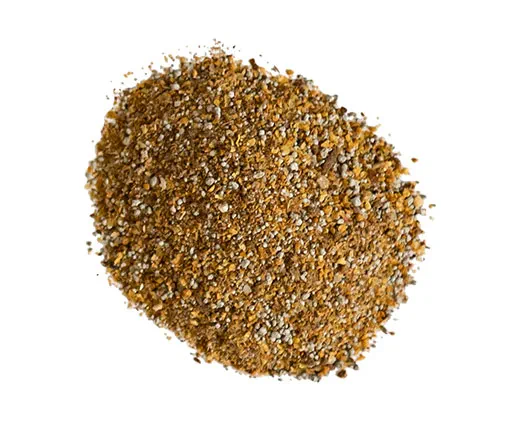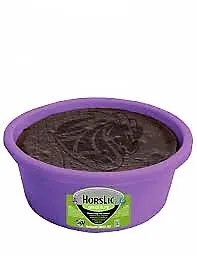Defining the Trace Mineral Supplement Category?
- On Course Equine Nutrition
- Jun 1, 2023
- 6 min read
Updated: Dec 2, 2024
The OCEN Fortified Four include complete feeds, performance feeds, ration balancers, and trace mineral supplements. We're finishing our discussion of each category with trace mineral supplements! It's a very large category with many forms and blends, but they all have a singular PRIMARY purpose.
If you are feeling overwhelmed by the feed store and/or shopping online than this series is for you. I'm going to help you organize, categorize, and sift through the massive amount of products for better clarity and confidence. I make sense of the feed store and online supplement pages by putting products into one of 6 categories. The majority of products on the market will fall into what I call the "Fortified Four". Read on to learn more!

DEFINITION
The nutritionist (hopefully it's a nutritionist) who formulates a trace mineral supplement has realized one very important fact; 99.99% of all hays and pastures in all parts of the country are deficient in many trace minerals; specifically three trace minerals- zinc, copper and selenium. The exception to this deficiency rule are midwest regions and hotspots around the country where selenium is actually quite high. You won't know for sure without a forage test, so consider reading "How to Test Your Hay" by OCEN, LLC. In my experience, forages are only meeting about 40-50% of your horse's copper requirement and only 60-70% of your horse's zinc requirement- very generally speaking and assuming that we don't have a forage test. If you live on the East or West coasts, we can grossly assume that selenium is <0.01% and will likely not register on a forage test. These trace minerals are needed by the horse in minuscule amounts, BUT they are absolutely paramount for good health!
So, what defines a trace mineral and why are they so important? A trace mineral differs from a major mineral in the amount required by the horse. They are sometimes referred to as minor minerals and include iron, zinc, copper, manganese, selenium, cobalt and iodine. Trace minerals requirements are measured in milligrams per day and will be expressed as ppm (parts per million) on a guaranteed analysis. Major minerals on the other hand are measured in grams per day and will be expressed as percentages on a guaranteed analysis. Major minerals include calcium, phosphorus, potassium, magnesium, sodium and chloride. The main point to remember is that horses need trace minerals in tiny, tiny amounts. For example, your mature 1000 lb horse may only need about 120 milligrams per day of copper. A "List of Common Things that Weigh a Milligram" included a small feather, a fraction of a raindrop and half of a small mosquito! So, your horse only needs the equivalent of 60 small mosquitos of copper to survive each day. Does that help? Maybe not. Anyway, it's very small! I mentioned that these trace minerals are very important to your horse's health! Listing the benefits of these trace minerals would take another 6 articles, so suffice it to say, that they are critical for every process in the body. If you are an OCEN Community Member, you might review "How Feeding Trace Minerals Affects Immune Status" with Dr. Connie Larson under Member Resources and the guest lecture library.
The Best Equine Nutrition Course You'll Ever Take!
[CLICK HERE TO LEARN MORE]
HOW TO SPOT A TRACE MINERAL SUPPLEMENT AT YOUR FEED STORE
You will ALWAYS know a trace mineral supplement by its feeding instructions first and its ingredients second. With very few exceptions, a nutritionist will design a trace mineral supplement to be consumed in ounces per day. It's a very small scoop! The exact amount will be determined by the primary ingredients in which the trace minerals are mixed- typically between 1-8 ounces per day. You see, trace minerals are very bitter, so a medium is required to add bulk and flavoring. Alfalfa meal, ground flaxseed, dried distillers solubles, and wheat middlings are common ingredients used to deliver the product into the horse. Usually, the mixing medium is the first ingredient on the list and then it's immediately followed by a mineral.
The most confusing thing about spotting a trace mineral product at your local feed store or while shopping online is that the primary trace mineral function is often hidden amongst the rhetoric. In the arms race that is today's modern equine supple market, the companies are competing aggressively for your attention. So, they add and add and add ingredients to seem complex and unique, until they hardly look like the original thing that was intended. The trick to identifying the haves and have nots is to know the amount of

FIVE FORMS OF TRACE MINERAL SUPPLEMENTS?
In order to begin to sift through the variety trace mineral supplements available, you need to understand the variety of forms. In this case, you can have multiple different forms with the same function; to deliver key trace minerals to the horse in the right amount per day. Nutritionists do this in one of five forms; granular, pellets, blocks, lick tubs and liquid. Granular and pelleted trace mineral supplements are the most common, but it's important to realize that some are designed to be force-fed and other's free-choice. Force-fed supplements are designed to be measured and scooped ontop of a medium each day and presented to the horse. However, the free-choice options were designed to be left 24/7 out with a herd of horses on pasture situations. They do this safely by mixing the trace mineral fortification with salt. Salt helps regulate intake. A good example of this is the Equis Ultramin granular free-choice supplement. How do you know the difference between a force-fed and free-choice trace mineral? Ding Ding Ding...NICE WORK! You're catching on! It's the feeding instructions!
Molasses based lick tubs are almost always designed to be fed free-choice. Originally, the nutritionist had in mind a herd of horses on good quality pasture who would have to be "lured" into consuming a bitter trace mineral supplement. They also require some competition between herd mates. This was the initial and ideal intention. I do sometimes see them used in smaller confinement areas, but rarely with much success. Most horse owners try them once, watch in horror while their horse consumes it in a couple days, and then never use them again. So, be careful!
Liquid trace mineral supplements are rare. That's all that I'll say about them, except that they aren't likely worth the mess.
The final form to discuss are blocks. All blocks are designed to be fed free choice. However, some are adequate and some are not. It depends on their ingredients. When you see a trace mineral block where 96-99% of the product is salt, that is a sign that the block is not adequate. Your typical reddish brown, trace mineral block from the feed store is not adequate for three reasons. First, as I mentioned, the product is >95% salt, so the horse isn't going to consume it unless they desire salt, Secondly, the trace minerals are always in the form of oxides which is poor. Third, the horse's typically don't eat 2-4 ounces per day of them. They sit and sit and sit and finally get washed away by the rain. Please do not use these extremely high salt (sodium chloride) blocks as your horse's trace mineral program!
WHY USE A TRACE MINERAL SUPPLEMENT?
Everyone, and I do mean everyone, that loves their horses should have them on, at the very least, a simple trace mineral supplement OR ration balancer (*see previous article on this topic). That is, if the horse does NOT need additional calories beyond what the forage provides. If the horse does need more calories, then check out the performance feed and complete feed categories of the "Fortified Four". I make this very strong statement, because trace minerals are that important to your horse's overall health. They are the basis for "bloom" and "thrift". Good feet, good skin, good hair coat and good immune systems all start with proper fortification of trace minerals in your horse's diet. No single function supplement will ever make up for the lack of these trace minerals in the diet. You will always be wanting more.
Now that you understand the variety of trace mineral supplements that exist, you can start shopping with greater clarity and confidence. Unfortunately, it does take a calculator, a pencil and maybe an eraser to due proper justice to trace mineral supplement comparison. At On Course Equine Nutrition, I do do a lot of calculations to compare these products and then determine their value with price as well. That is the next step. If you need help with those calculations and determining the right trace mineral supplement for you, then click the link below to schedule a FREE 15 Minute Discovery Call!














Comments